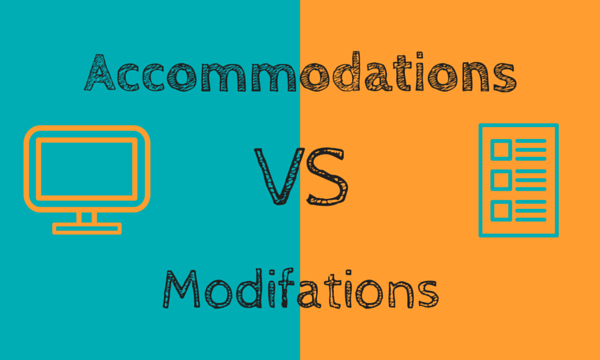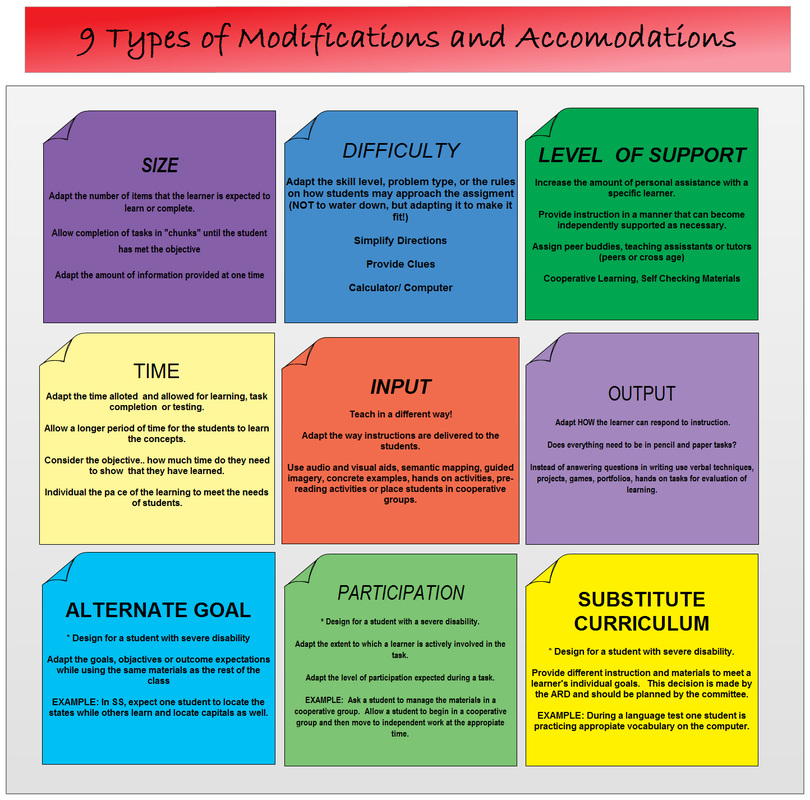

What would you say to an educator who feels they don’t have time to work in accommodations and/or modifications for the students who need them? How can busy teachers reconcile their time constraints with the need to ensure that all learners have the best chance for success? The decision to provide students with accommodations and/or modifications is based on the results of the evaluations as well as the consensus of the school and the student’s family.ģ. Together, the teacher and learning specialists will use their expertise to investigate potential barriers to learning through informal and formal evaluations. When a teacher notices that a student is continuously struggling to access and/or learn lesson content, the teacher will alert the learning specialists in the school. Sometimes a teacher will notice that a student is struggling to see the learning material, hear a lesson, or understand a concept. Teachers track student progress through ongoing observation and assessment.

a modification? What goes into that decision? How can a teacher tell when a student needs an accommodation vs. It is important to note that a student might also need accommodations to learn his or her modified work, thus making curriculum accessible and possible.Ģ. Modifications can include providing the student with a simplified version of lesson, expecting the student to master a reduced number or concepts or central themes, and/or providing the student with prompts. The process of creating a modified program includes using instructional strategies to breakdown curriculum. Therefore, for a student who works below grade level, modifications to curriculum give the student an opportunity to learn from and participate in the same curriculum as his or her peers.

Modifications change the learning outcomes of a lesson to suit the cognitive ability of the student. In contrast, adaptations in the form of modifications make curriculum possible. To help the student remain focused long enough to learn the lesson material, a teacher can seat the student away from windows, doorways, walkways, or gathering areas. For example, a student may understand the content of the lesson but may be easily distracted by movement and noise in the classroom. Accommodations are often referred to as, “pathways to learning.” Educators can create pathways for students to learn by altering the presentation, expected response, educational setting, and timing of a lesson. Rather, accommodations change the way students access learning. Accommodations do not change learning outcomes. They provide students with an equal opportunity to learn from the same material as his or her peers. Accommodations and modifications are two types of adaptations that can remove barriers to learning.Īccommodations are adaptations that make curriculum accessible. The alteration of the curriculum and learning environment, to help a student achieve educational success, is known as an adaptation. For example, a student might need extra test-taking time, larger print materials, simplified material, or visual reminders. In addition to research-based, quality instruction (such as Universal Design for Learning), some students require support in order to meet the learning expectations. Yes! Educators use a variety of teaching and assessment strategies to help students access the curriculum. You’ve explained this on your excellent blog before, but for anyone who doesn’t know-can you briefly clarify the difference between accommodations and modifications? Nicole Eredics of The Inclusive Class (And stay tuned, because on Thursday we’ll be back with 17 more accommodations and modifications from our most popular inclusion books!)ġ. In this Q&A, she shares some of her favorite tips for creating adaptations that help students succeed in school. Today I’m honored to welcome a real expert in this area: Nicole Eredics, the educator, blogger, and inclusion advocate behind the brilliant site The Inclusive Class and the author of the popular book Inclusion in Action. The school year’s quickly drawing to a close-but before you say goodbye to this year’s students and start your summer activities, we’re bringing you a few practical posts on accommodations and modifications to add to your toolbox for next year.

This post is part of our Fair is Not Always Equal…Now What? blog series.


 0 kommentar(er)
0 kommentar(er)
